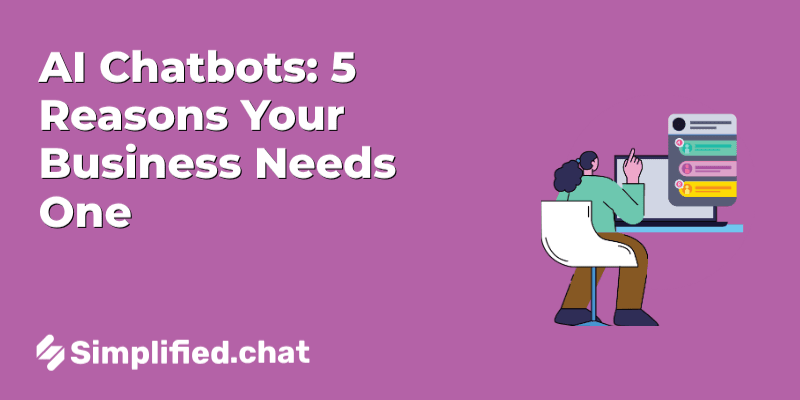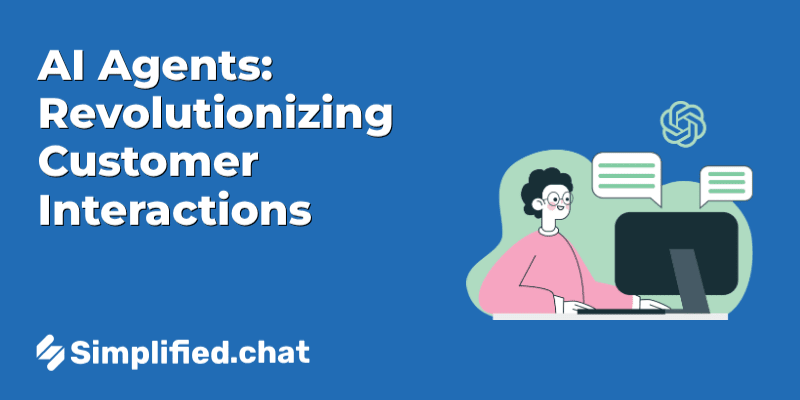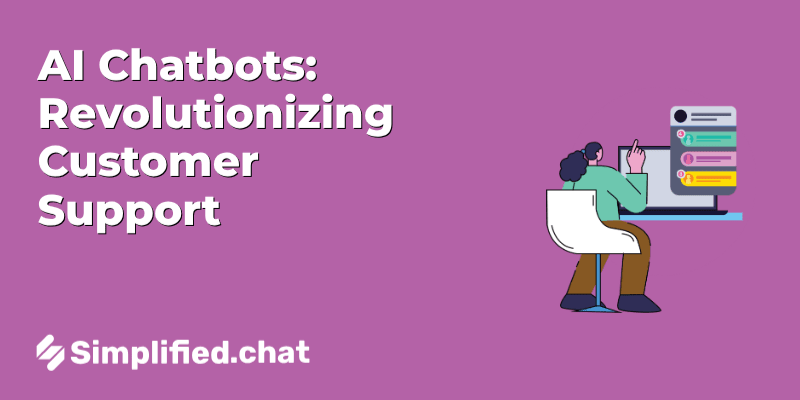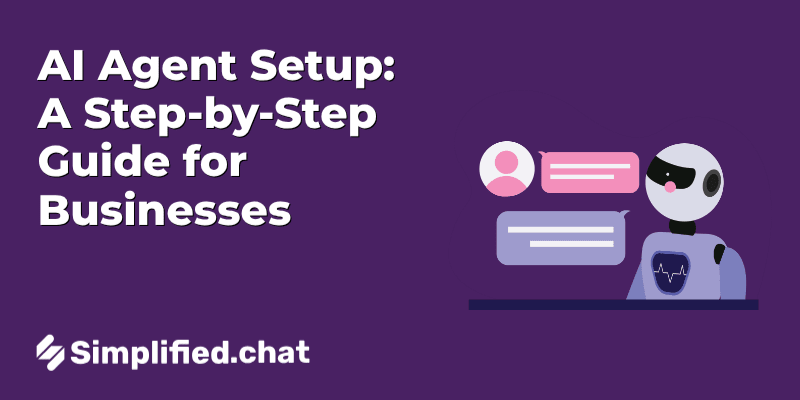Table Of Content
Why Does Your Business Need an AI Chatbot?
An AI chatbot is a computer program powered by artificial intelligence that simulates human conversation. It can understand and respond to customer inquiries, provide support, and automate tasks, all without human intervention.
According to a Gartner report, by the end of 2025, 85% of customer service interactions will be supported by chatbots. The report also highlights that companies utilizing AI-driven customer support have experienced a 30% reduction in response times and a 20% increase in customer satisfaction. This demonstrates the important role chatbots play in improving customer service speed and quality.
24/7 Instant Customer Support: Meeting Customers Whenever and Wherever They Need

In today’s fast-paced world, customers expect help as soon as they hit a snag, no matter the time or day. Offering 24/7 instant customer support isn’t just a convenience—it’s a critical component of building trust and loyalty. Let’s unpack why continuous availability and quick responses are invaluable, especially when your customer base spans the globe.
Always-On Availability: Support Beyond Traditional Hours
Providing support around the clock means your customers are never left waiting until the next business day. Whether it’s late at night, during a holiday, or just outside regular office hours, your service remains accessible. This uninterrupted support fosters confidence, showing you’re dependable and attentive to customer needs whenever they arise.
Instant Responses: Eliminating the Frustration of Waiting
Studies show that customers increasingly expect immediate answers, especially when reaching out via digital channels like chat or messaging apps. Instant responses reduce frustration and prevent issues from escalating. This quick turnaround not only resolves problems faster but also conveys that your business values the customer’s time and concerns.
Global Reach: Serving Customers Across Time Zones Without Extra Staffing Costs
Expanding your support to a global audience presents logistical challenges—different time zones mean it’s not feasible to have human agents available everywhere at all times. Leveraging technologies such as AI-powered chatbots or streamlined ticketing systems allows you to maintain consistent service without multiplying staffing expenses. This approach ensures your customers receive timely assistance no matter where they are located.
Reducing Operational Costs Without Sacrificing Quality

Operational costs are a persistent challenge for many businesses, particularly in customer support where demand fluctuates and resource allocation can be unpredictable. By adopting smarter support strategies, companies can significantly reduce expenses while maintaining, or even improving, service quality. Three key areas illustrate how businesses can achieve this balance: staffing, agent productivity, and scalable expansion.
Lower Support Staffing Needs
Handling a high volume of customer queries often requires large teams, which translates into considerable salaries, benefits, training, and management overhead. However, automation and intelligent systems can absorb a substantial portion of routine and repetitive inquiries. For instance, chatbots and self-service portals handle common questions quickly and accurately, limiting the need for a vast frontline staff. Studies reveal that automating even 20-30% of inquiries can reduce support staff requirements without leaving customers waiting.
Improved Agent Efficiency
With repetitive and simple issues filtered out by automation, human agents can concentrate on more complex problems that require empathy, critical thinking, and personalization. This not only improves agents’ job satisfaction but also increases their productivity. Well-supported agents resolve issues faster and reduce callbacks or escalation, which lowers the overall cost per interaction. A workforce focusing on high-impact tasks ensures business resources are spent where they matter most—something frontline staff alone cannot consistently deliver at scale.
Cost-Effective Scalability
Scaling support operations to keep pace with business growth traditionally meant hiring more staff, expanding office space, and investing in training—all of which add up quickly. Leveraging automated solutions enables cost-effective scalability: technological tools can ramp up to handle greater volumes instantaneously, without the proportional increase in expenses. This flexibility allows businesses to absorb seasonal spikes or unexpected demand surges without compromising response times or budget.
In summary, reducing operational costs in customer support is less about cutting corners and more about reallocating resources intelligently. Freeing human agents from mundane tasks, optimizing their time, and relying on scalable technology delivers both financial efficiency and improved service experience—making it a sustainable approach for businesses aiming to thrive long-term.
Enhanced Customer Engagement: Building Meaningful Connections

Customer engagement is no longer just about responding to inquiries—it's about creating an experience that resonates on a personal level, anticipates needs, and reflects a brand’s identity consistently. This approach not only fosters loyalty but also builds trust over time, encouraging ongoing dialogue between businesses and their customers.
Personalized Interactions
Tailoring conversations to individual preferences and histories deepens the connection customers feel with a brand. When businesses use customer data thoughtfully, they can address unique needs and offer relevant suggestions, which studies show significantly improves satisfaction and retention.
For example, a retailer recalling a customer's past purchases can recommend complementary products instead of generic options. Personalization goes beyond using a customer's name—it’s about acknowledging their preferences and behaviors, making each interaction meaningful.
Proactive Support
Waiting for customers to reach out with questions or problems is a missed opportunity. Proactive support anticipates potential issues or needs and addresses them before they escalate. This might involve sending helpful reminders, sharing tutorials, or alerting customers about delays before they inquire.
Research highlights that proactive communication increases customer confidence and reduces frustration, creating a smoother experience. Offering assistance before it’s requested shows attentiveness and care, positioning the business as a partner rather than a mere vendor.
Consistent Brand Experience
Every interaction is a chance to reinforce the brand’s voice and values. Consistency—whether in tone, response quality, or professionalism—assures customers they are dealing with a reliable entity. This uniformity strengthens brand recognition and trust.
Ensuring all platforms and customer service channels align in their messaging helps prevent confusion. Training teams to understand and embody brand principles guarantees that every touchpoint reflects the intended customer experience.
Automate Lead Generation and Sales for Smarter Growth

Efficiently managing lead generation and sales can be one of the most demanding aspects of running a business. By automating these processes, companies can not only save time and resources but also improve accuracy and conversion rates. The key is to focus on three critical areas: qualifying leads, tailoring product recommendations, and streamlining the sales journey.
Qualify Leads: Turning Prospects into Opportunities
Not every visitor or contact is ready to become a customer. Automated lead qualification systems help gather essential information about potential customers through forms, chatbots, or interactive content. This data collection enables businesses to identify which prospects have genuine interest and the potential to convert. For example, simple questionnaires can assess budget, timeline, or specific needs, allowing sales teams to prioritize high-value leads.
Studies show that businesses that implement lead qualification can reduce wasted effort and improve sales efficiency by focusing on the most promising prospects.
Product Recommendations: Personalized Suggestions that Resonate
Once qualified leads are identified, the next step is to engage them with relevant offers. Automated recommendation engines analyze customer preferences, browsing history, and past interactions to suggest products or services that truly match their needs. This personalization not only improves the buying experience but also increases the likelihood of upselling and cross-selling.
For instance, an online retailer could automatically highlight complementary accessories after a customer adds an item to their cart, helping to boost average order values without the need for manual intervention.
Streamline Sales Process: Guiding Customers Smoothly to Purchase
The final stage is orchestrating an efficient and frictionless sales journey. Automation tools can guide customers through each step — from initial inquiry to closing the deal. This might include scheduling follow-up communications, sending timely reminders, or even processing payments within a single platform.
By reducing delays and providing clear next steps, automation helps shorten sales cycles and enhances the overall customer experience. Additionally, automating routine tasks frees up sales teams to focus on meaningful interactions and relationship building.
Ultimately, integrating automation in lead generation and sales isn’t about replacing human touchpoints but rather amplifying their impact through smart, data-informed processes.
Leveraging Data-Driven Insights to Enhance Customer Support

In today's environment, relying on instinct alone is no longer sufficient to improve support systems. Instead, businesses are tapping into data-driven insights for meaningful enhancements. By systematically collecting and analyzing customer interactions, companies can identify patterns and pain points, paving the way to more effective support strategies.
Collect Customer Data
The foundation of data-driven improvement starts with gathering comprehensive customer information. This includes behavioral data such as click paths, frequently asked questions, response times, and satisfaction ratings. Equally important are preferences around communication channels and common issues faced by customers. Collecting this data can be achieved through chat logs, surveys, and automated tracking tools embedded in customer support platforms.
Identify Trends
Once data is collected, the next step is analysis. Look for recurring themes such as specific problems that consistently cause confusion or delays. For instance, studies show that common issues often stem from unclear product instructions or limited self-service options. By pinpointing these trends, businesses can prioritize areas that require attention instead of applying broad, unfocused fixes.
Optimize Support Strategies
With a clear understanding of customer needs and challenges, companies can refine their chatbot responses and broader support tactics. This can include:
- Updating chatbot scripts to address the most frequent concerns accurately and swiftly.
- Implementing proactive notifications or help prompts based on identified customer behaviors.
- Enhancing escalation protocols for issues not resolved by chatbots to improve resolution rates and customer satisfaction.
Data-driven optimization not only improves response relevance but can also reduce customer effort, fostering a more positive experience overall. Continual monitoring ensures that support strategies evolve alongside changing customer expectations and emerging trends.
Why AI Chatbots Are Essential for Your Business Success
AI chatbots provide an effective way to offer around-the-clock assistance, reduce staffing costs, increase efficiency, and create engaging, personalized experiences for customers. They also help automate lead generation and sales while giving insights through data that allow continuous improvement of customer interactions.
Simplified.chat enables you to utilize customizable AI chatbots that connect smoothly with platforms like WhatsApp and Facebook Messenger. This helps transform routine conversations into meaningful customer actions. Ready to enhance your customer support and grow your business? Visit Simplified.chat to explore its capabilities and get started today.
Empower Your Business with Simplified AI Chatbot
Build Your Own AI ChatbotBuild Your First AI Agent Today
Build, train, customize and deploy your first AI chatbot in minutes




